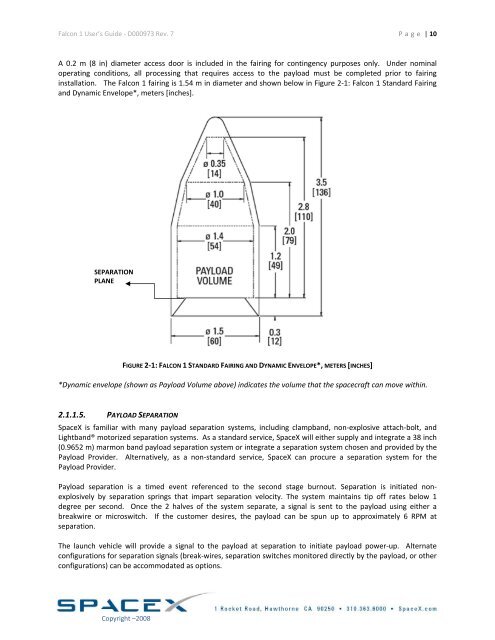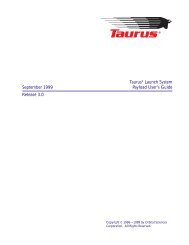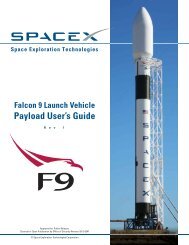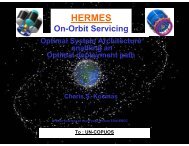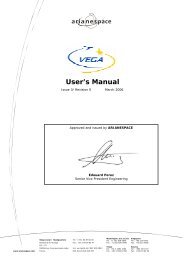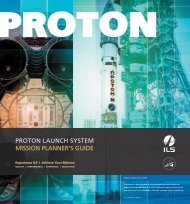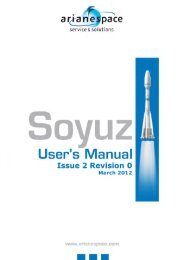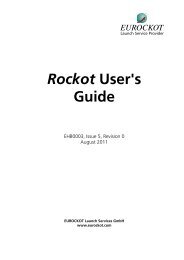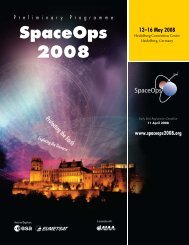Falcon 1 User's Guide - Rev 7 - FOIA and eLibrary website! - Nasa
Falcon 1 User's Guide - Rev 7 - FOIA and eLibrary website! - Nasa
Falcon 1 User's Guide - Rev 7 - FOIA and eLibrary website! - Nasa
You also want an ePaper? Increase the reach of your titles
YUMPU automatically turns print PDFs into web optimized ePapers that Google loves.
<strong>Falcon</strong> 1 User’s <strong>Guide</strong> ‐ D000973 <strong>Rev</strong>. 7 Page | 10<br />
A 0.2 m (8 in) diameter access door is included in the fairing for contingency purposes only. Under nominal<br />
operating conditions, all processing that requires access to the payload must be completed prior to fairing<br />
installation. The <strong>Falcon</strong> 1 fairing is 1.54 m in diameter <strong>and</strong> shown below in Figure 2‐1: <strong>Falcon</strong> 1 St<strong>and</strong>ard Fairing<br />
<strong>and</strong> Dynamic Envelope*, meters [inches].<br />
SEPARATION<br />
PLANE<br />
FIGURE 2‐1: FALCON 1 STANDARD FAIRING AND DYNAMIC ENVELOPE*, METERS [INCHES]<br />
*Dynamic envelope (shown as Payload Volume above) indicates the volume that the spacecraft can move within.<br />
2.1.1.5. PAYLOAD SEPARATION<br />
SpaceX is familiar with many payload separation systems, including clampb<strong>and</strong>, non‐explosive attach‐bolt, <strong>and</strong><br />
Lightb<strong>and</strong>® motorized separation systems. As a st<strong>and</strong>ard service, SpaceX will either supply <strong>and</strong> integrate a 38 inch<br />
(0.9652 m) marmon b<strong>and</strong> payload separation system or integrate a separation system chosen <strong>and</strong> provided by the<br />
Payload Provider. Alternatively, as a non‐st<strong>and</strong>ard service, SpaceX can procure a separation system for the<br />
Payload Provider.<br />
Payload separation is a timed event referenced to the second stage burnout. Separation is initiated nonexplosively<br />
by separation springs that impart separation velocity. The system maintains tip off rates below 1<br />
degree per second. Once the 2 halves of the system separate, a signal is sent to the payload using either a<br />
breakwire or microswitch. If the customer desires, the payload can be spun up to approximately 6 RPM at<br />
separation.<br />
The launch vehicle will provide a signal to the payload at separation to initiate payload power‐up. Alternate<br />
configurations for separation signals (break‐wires, separation switches monitored directly by the payload, or other<br />
configurations) can be accommodated as options.<br />
Copyright –2008


